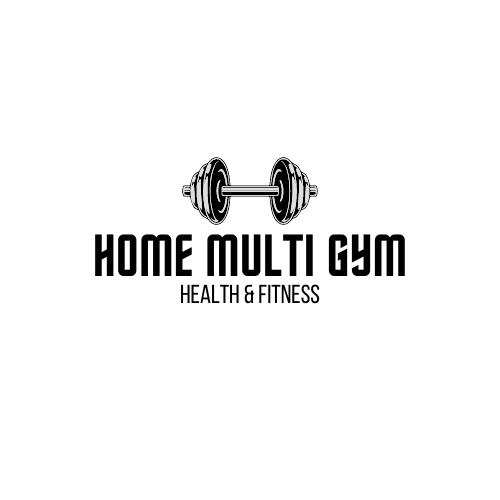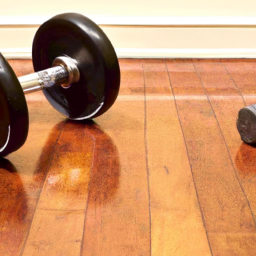Hey there! Have you ever wondered if there are any special considerations for setting up a home multi-gym on different types of flooring? Well, you’re in luck because we’re here to answer that question for you.
In our upcoming article, we’ll delve into the various factors you should keep in mind when setting up a home multi-gym on different types of flooring. We’ll discuss the importance of choosing the right flooring material, the impact of weight and vibrations on different flooring types, and the potential damage that can occur if you don’t take the necessary precautions. So, whether you have hardwood floors, carpeting, or tiles, we’ve got you covered! Stay tuned to learn all about the special considerations for setting up your home multi-gym on different types of flooring. Setting up a home multi-gym can be an exciting endeavor, as it allows you to exercise and stay fit in the comfort of your own home. However, when it comes to selecting the right flooring for your home gym, there are a few important factors to consider. In this article, we will explore the suitability of different types of flooring for home multi-gyms and discuss the necessary protective measures to ensure the longevity of both the equipment and the flooring.
Determining the Suitable Location
Before diving into the specifics of flooring types, it is important to start by evaluating the available space in your home. The size and dimensions of the room will dictate the type of gym equipment you can accommodate. Additionally, considering the proximity of the gym to other areas in the house, such as bedrooms or living rooms, is vital to minimize disruptions and noise.
Another crucial aspect to take into account is the flooring. Ideally, the gym should be situated on a level surface to ensure stability and prevent any accidents or injuries. Checking for level flooring is a simple yet essential step in the set-up process.
Understanding Flooring Types
Different types of flooring offer varying levels of suitability for home multi-gyms. Let’s take a closer look at the most common flooring options and their characteristics.
Identifying Hardwood Flooring
Hardwood flooring is a popular choice for many homeowners due to its durability and aesthetic appeal. However, it is important to exercise caution when setting up a multi-gym on hardwood floors. Hardwood is susceptible to damage from heavy equipment and can suffer scratches and indentation. Protective measures are necessary to prevent long-term damage.
Recognizing Carpeted Flooring
Carpeted flooring offers comfort and noise reduction, making it an attractive option for home gyms. However, it is important to note that carpeting may not provide sufficient stability for heavy gym equipment. Utilizing thick exercise mats or interlocking tiles can help distribute the weight and protect the carpet from compression.
Analyzing Concrete Flooring
Concrete flooring is known for its strength and stability, making it an ideal choice for home multi-gyms. However, it is important to check for cracks or uneven surfaces, as they can impact the performance and longevity of both the equipment and the flooring. Thick rubber mats or tiles can offer additional protection and shock absorption.
Exploring Laminate Flooring
Laminate flooring is a cost-effective option that resembles hardwood but is typically less durable. When setting up a multi-gym on laminate flooring, it is crucial to avoid heavy or sharp-edged equipment that can cause indentations or scratches. Thick foam or rubber mats can help minimize the risk of damage.
Examining Vinyl Flooring
Vinyl flooring is a versatile option that is water-resistant and easy to maintain. However, it is important to protect vinyl floors from scratches and dents caused by gym equipment. Dense rubber mats or vinyl tiles can provide effective protection. Additionally, avoiding dragging or moving heavy equipment can help prevent damage.
Considering Tile Flooring
Tile flooring is resilient, easy to clean, and offers excellent durability. These qualities make it an ideal choice for home multi-gyms. Tile floors can withstand heavy gym equipment without sustaining damage. Regular cleaning and maintenance will ensure a durable surface for your gym equipment.
Impact of Gym Equipment
When setting up a home multi-gym, it is crucial to assess the weight and dimensions of the equipment you plan to use. This information is vital to ensure that the flooring can support the equipment without any risk of structural damage. Additionally, consider any potential noise or vibrations that the equipment may generate, especially if the gym is located in close proximity to bedrooms or living areas.
Protective Measures for Hardwood Flooring
If you have hardwood flooring in your home, it is important to take extra precautions to protect it from damage. Using rubber mats or gym flooring underneath the equipment can help distribute the weight and prevent scratches. Installing foam pads or rubber feet on the equipment itself can also provide an added layer of protection. Lastly, avoiding heavy weights or dropping them can help preserve the integrity of the flooring.
Considerations for Carpeted Flooring
To protect your carpeted flooring from compression and wear, utilize thick exercise mats or interlocking tiles beneath the gym equipment. These mats or tiles will help distribute the weight, preventing the equipment from leaving permanent indentations. Additionally, using a protective layer like plywood or carpet remnants can further shield the carpet from damage. Ensuring that the equipment is securely fastened will prevent any sliding, reducing the risk of accidents.
Suitability of Concrete Flooring
Concrete flooring is typically a stable and durable choice for home multi-gyms. However, it is important to check for cracks or uneven surfaces that could compromise both the equipment and the flooring. Using thick rubber mats or tiles can offer additional shock absorption and protection. Consider investing in shock-absorbing equipment mats to further reduce the impact on the floor.
Laminate Flooring and Gym Equipment
While laminate flooring may not be as durable as hardwood, it can still be suitable for a home multi-gym with the right precautions. To minimize the risk of damage, avoid using heavy or sharp-edged equipment that can cause indentations or scratches. Investing in thick foam or rubber mats can help protect the laminate flooring from impact. Additionally, preventing water damage by wiping up any spills immediately is essential for preserving the integrity of laminate floors.
Vinyl Flooring and Home Gyms
Vinyl flooring is resilient and easy to maintain, making it an excellent choice for home gyms. However, it is important to take precautions to protect against scratches and dents. Dense rubber mats or vinyl tiles placed strategically beneath the gym equipment can help distribute the weight and prevent damage. Avoid dragging or moving heavy equipment to minimize the risk of damage to the flooring.
Benefits of Tile Flooring for Multi-gyms
Tile flooring offers several advantages for home multi-gyms. First and foremost, it is easy to maintain and clean, making it an ideal choice for fitness spaces. Additionally, tile floors are highly resistant to wear and tear, ensuring the longevity of both the flooring and the equipment. The durable surface can easily support heavy gym equipment without sustaining damage, making it a reliable and safe option for your home gym.
Conclusion
Setting up a home multi-gym on different types of flooring requires careful consideration. Before making a decision, evaluate the suitability of the flooring type and its ability to withstand the impact of gym equipment. Assessing the weight and dimensions of the equipment, as well as any potential vibrations or noise, is essential for a successful home gym setup. Taking the necessary protective measures, such as using rubber mats or gym flooring, installing foam pads or rubber feet, and avoiding heavy weights or dropping them, can help preserve the longevity of both the equipment and the flooring. By following these guidelines, you can create a safe and functional home multi-gym that will allow you to achieve your fitness goals in the comfort of your own home.

